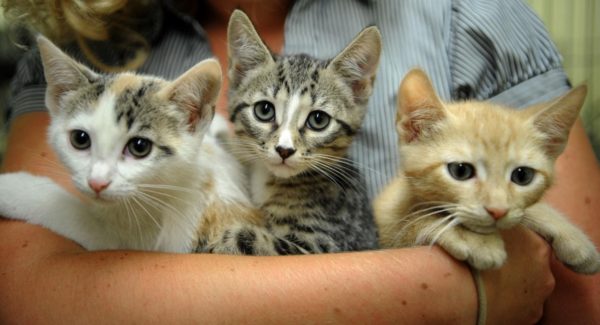Cat Overpopulation

Currently, the ASPCA approximates 3.4 million cats entering animal shelters nationwide every year. Statistics show that 3.1 million cats are adopted each year; however, the rest of the abandoned population faces either euthanization or a prolonged stay at municipal or rescue shelters. Cats from overpopulated shelters come from either all kinds of owner surrenders or the many instances where cats are picked up by Animal Control. In order to ensure a happy ending for all cats, people across the community work tirelessly to ensure overpopulation is reduced in many different ways.
Spay And Neuter
It all stems from the simple fact that not everyone spays or neuters their cats. Besides maintaining the cat population, spay and neuter prevents certain types of cancers and other health conditions that stem from a simple yet effective procedure. If price is an issue, keep an eye out for clinics offering discounted procedures. The end result could benefit your cat’s health and your wallet. However, not all cats receive the luxury of a caring home.
Trap Neuter Release
Trap Neuter Release (TNR) volunteer groups primarily target the feral cat population that cannot be immediately adopted. The concept is, after having been trapped and transported to a clinic where they are either neutered or spayed, they may remain in their feral habitats. Usually these volunteer groups also work tirelessly to maintain a consistent feeding schedule for the feral colonies. The work may be slow and tedious; however, statistics have proven that consistent TNR work has steadily decreased the feral populations.
Adopt, Don’t Shop!
Support your local shelter. Cats end up at the shelters for one reason or another. Everyone who doesn’t own a pet can directly help ease cat overpopulation by adopting these “unwanted” and pushed aside animals instead of going to breeders or stores that breed animals merely for profit (keep an eye out though, some reputable stores like Petco host shelter animals). By supporting stores/shops, you are adding to the problem because they will keep breeding for money while shelter animals still exist with a population of cats that will double or even triple within the years to come. If you already have a pet, then advocate! Help your local shelter or rescue with their adoption efforts by helping advertise the cats in their care. You might end up giving many cats and kittens their new forever homes!
Other Ways To Help
Want to help alleviate the problem of overpopulation but can’t adopt? There are so many other ways to get involved! Fostering is an excellent opportunity that allows you to temporarily house an animal that would otherwise be taking up space and resources in a shelter. Not only are you freeing up space for the shelter to take in more animals, but you’re also helping to ease the fear, anxiety, stress, and frustration that many animals face in a shelter environment. If you can’t foster, consider volunteering! Volunteering has various hands-on and remote opportunities which allow you to aid the shelter in their mission of saving lives. Maybe you go in once a week to help clean kennels and attend to injured or sick animals that are waiting to be adopted, or perhaps you offer your assistance with managing a shelter’s website or social media outlets to better advertise their adoptable pets. If you are unable to volunteer, then you could look into donating either money or supplies to your local shelter in order to help them provide the necessities to all of the animals in their care. One way or another, we can all do our part to ease overpopulation and find homes for shelter animals!
Contributors: Sophia Wheatfall, Daisha Flores, Jose Parra, Rylee Garrett, & Alexis Meehan
